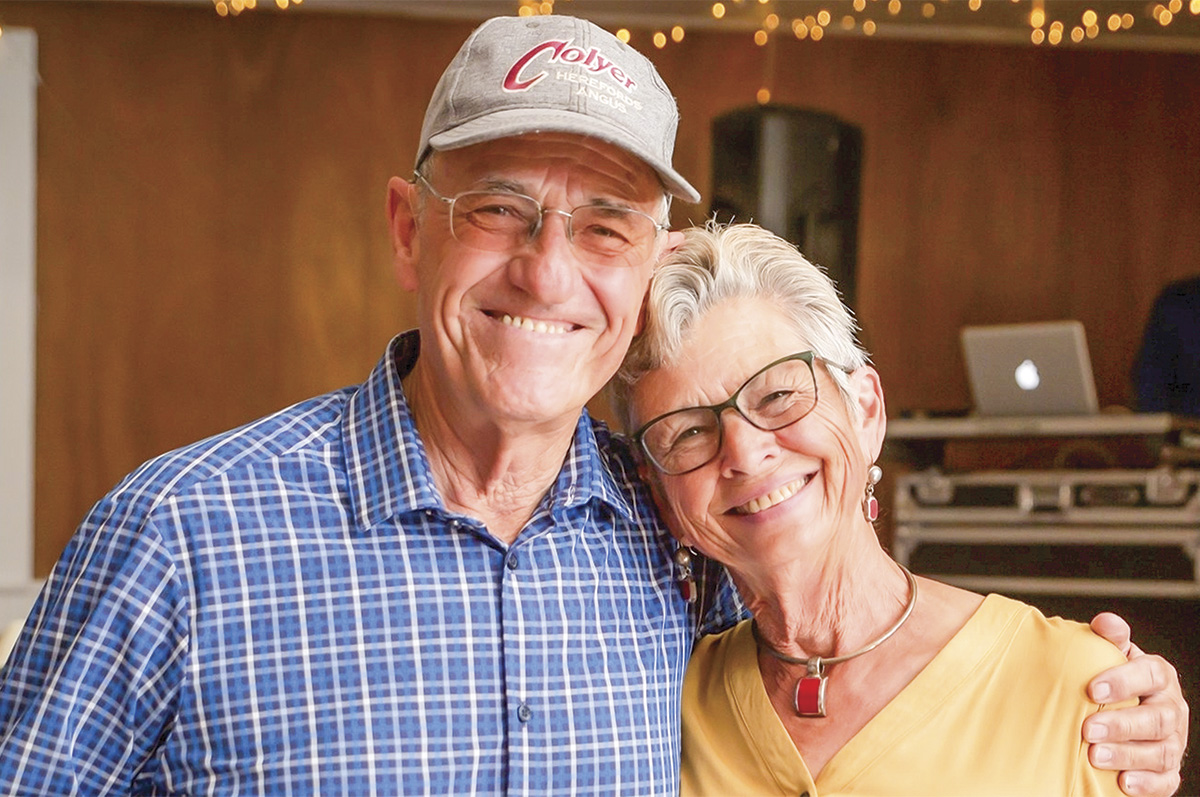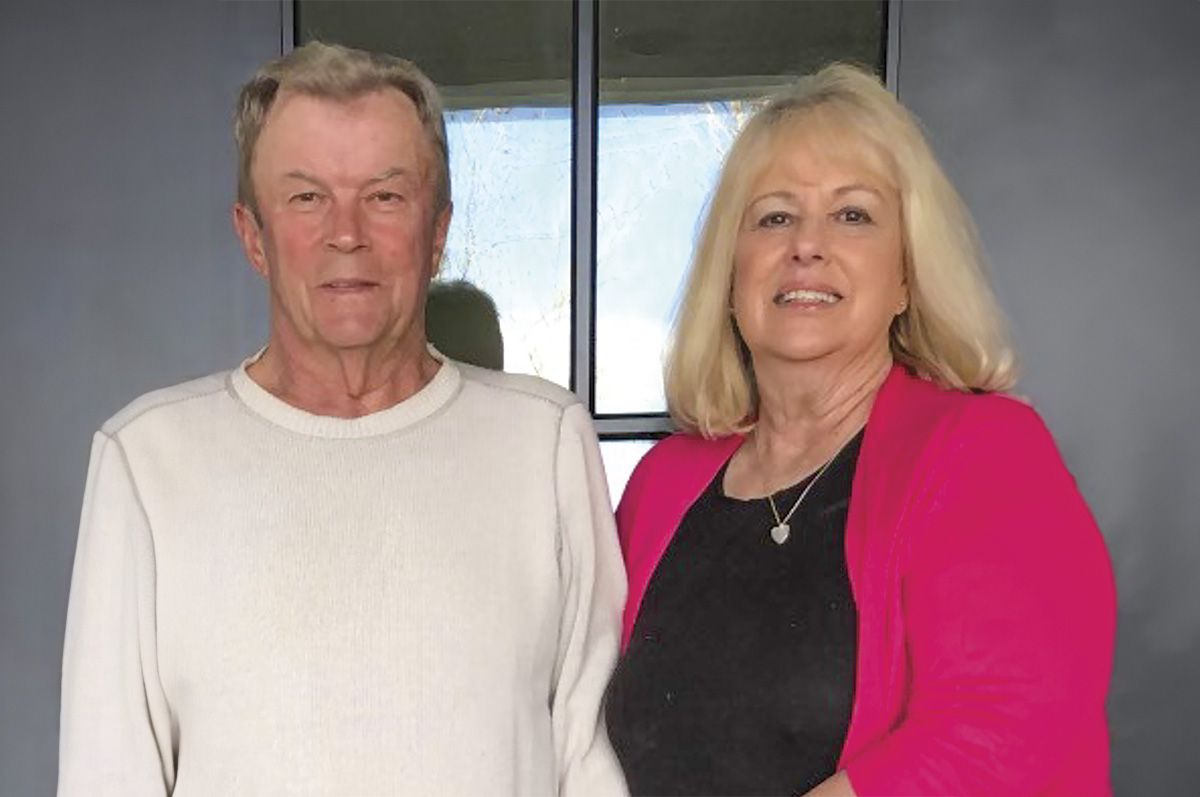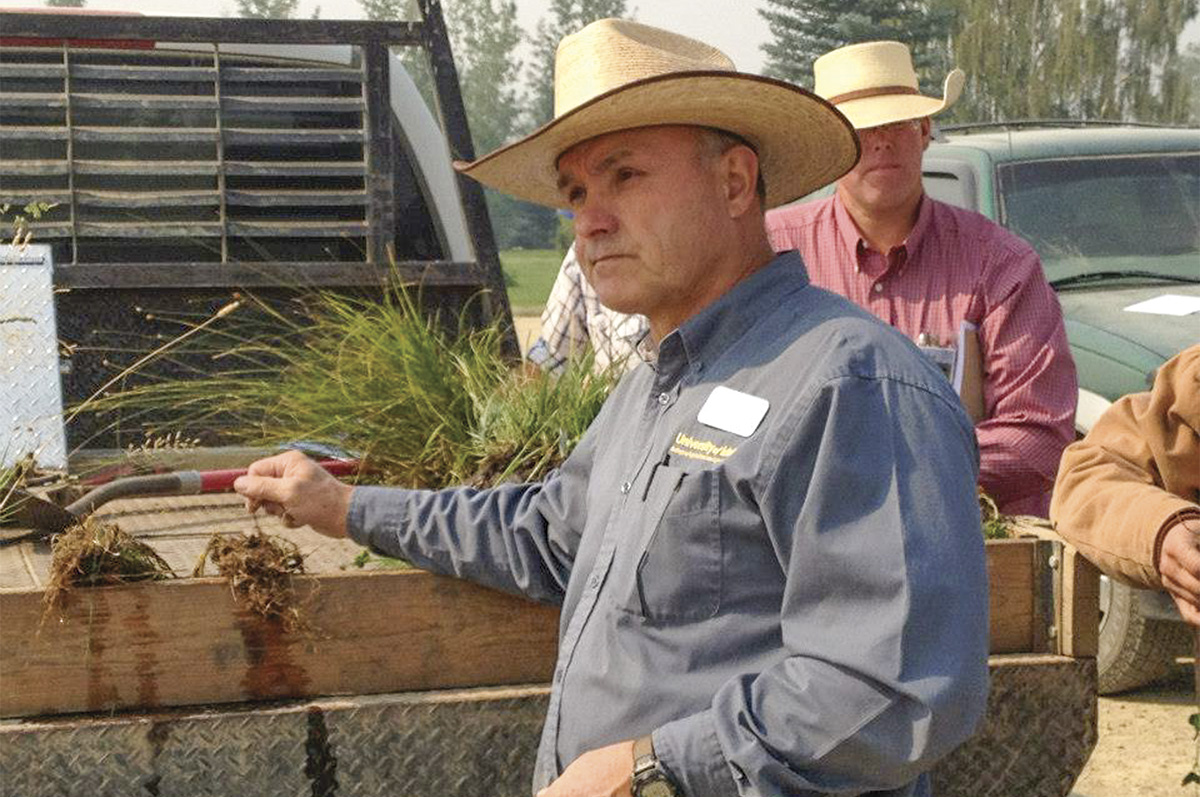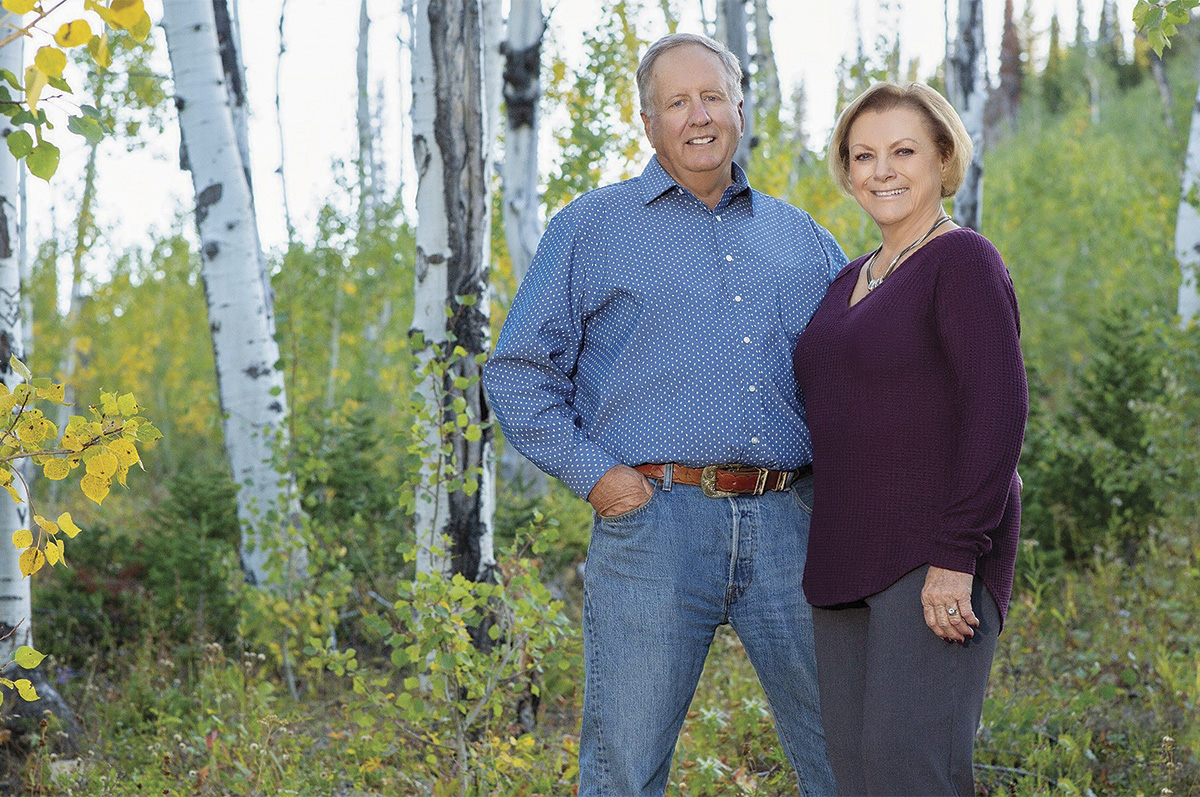Southern Idaho Livestock Hall of Fame recognizes the men and women who have made positive impacts on the livestock industry. The newest inductees were honored on April 9 during the organization’s 63rd annual banquet in Twin Falls.
Ted and Bonnie Tracy
Almo, Idaho
Not everybody ranches in Almo, Idaho, but some of the toughest ones do. Ted and Bonnie Tracy are the fifth generation of cattle ranchers to operate the Tracy Ranch in Almo.
When Ted was coming into adulthood, his father had cattle, a small dairy and a family store – whatever it took to make ends meet.
“We had old Surge milkers, which everybody had then, and I knew I didn’t want to milk cows the rest of my life. But I liked the cattle – I just didn’t like milking twice a day. So I decided it would be in my best interest to raise cows to eat,” Ted says.
But Ted learned his lifelong endeavor to produce beef wasn’t easier than milking cows – just different. Wintering and calving half the herd at Lynn, Utah, in Box Elder County at 6,800 feet elevation comes with challenges. So does dealing with the tourist season all summer at City of Rocks near Almo.
“The tourists are going to be there regardless, so you just go with it and learn to get along with them. And most of them are really pretty good to work with,” he says.
Ted and Bonnie have raised four sons on the ranch – Matt, Jason, Dan and Nathan. Jason helps full-time on the ranch today. They also have 20 grandchildren – four living on the ranch, one of whom is currently serving an LDS mission in California – and Ted hopes one day one of them might be interested in continuing the ranching legacy.
Ted started in the business with a mission statement: Increase the herd with high-quality cattle and expand the acreage to support pasture in summer and a variety of nutrient-rich feed in the winter.
To that end, the T/B Ranch now includes several thousand acres of alfalfa, oats, triticale and meadow hay. Today’s operation is based on Angus with some Simmental influence. They’ve utilized embryo transplants and A.I. to bring positive traits into their program.
The ranch has also participated with agencies to provide native brush for wildlife and fish ladders in ranch waterways.
T/B Ranch serves as a base camp for South Creek Outfitters, a 35,000-acre cooperative hunting unit in Utah. The ranch’s agricultural fields have allowed nonprofit hunting for Wounded Warrior and Chairbound Sportsman for 20 years.
Ted serves as the president of the Almo Water Company. Bonnie spent 30 years teaching in Almo and Raft River schools and was always available to drag meadows in the spring or rake hay in the summer.
They volunteer for various church positions and support FFA and 4-H events throughout the county.
“If I had to give advice today, I’d tell my boys you have to have a goal and stick with it – you can’t give up on it; you have to take the good with the bad and keep on going,” Ted says.
“I don’t know, though. My boys tell me to think outside the box more – but the thing is, the ‘box’ is what paid for this thing,” he says with a laugh.

Frank and Cindy Bachman. Courtesy photo.
Frank and Cindy Bachman
Bruneau, Idaho
It was his “day job” that set the stage for Frank Bachman’s livestock career and his life. Frank met his future wife, Cindy, during his 10-year career with the Bureau of Land Management as a range conservationist in the Jarbidge resource area.
“I also made lifelong friends there, and several ranchers kind of mentored me and were an important part of my development,” he says.
“One day, I went up on the mountain with Bill Swan where they built some ponds to put trout in, and as we were standing there looking at that, I thought, why couldn’t we run some of that water to the desert on the north? We talked about it, and lo and behold, over the next few years, we took that pipeline out to the desert. It was gratifying to see that project come to life,” he says.
Later, Frank worked for Simplot Livestock Company for 18 years as a lands manager, overseeing BLM and Forest Service grazing permits in five states and purchasing cattle. During that time, he helped buy several ranches, one in the Three Creek area, for the company.
“We sat at the kitchen table with Mr. Simplot [J.R.] and the family in Three Creek and negotiated the price. Those are cool memories for me,” he says.
Frank’s business philosophy was to develop a trust with the people he worked with.
“If you trust each other, you can do a lot of different things,” he says.
“But while I was trying to make ends meet, my wife, Cindy, took over and ran our ranch in Bruneau. I was gone quite a bit shipping cattle and traveling, and she kept everyone and everything on track. We wouldn’t have a ranch today if it wasn’t for her,” he says.
Cindy was recently appointed and is currently serving as Owyhee County Commissioner.
Frank and Cindy added to Bachman Land and Livestock in 1989 by purchasing Clover Crossing Ranch.
“We worked our tails off, because we started with nothing,” Frank says.
Their herd has grown to 400 cows, and they raise alfalfa, grass hay, corn silage and some grain and graze their cows mostly on Forest Service ground in northern Nevada.
“It took a secondary job to make it from nothing. I had a good job, and it carried us through the tough times. But this industry has been a wonderful way to raise kids,” he says.
Frank and Cindy have three children: Lynn (wife, Tiffany) who helps on the ranch in Bruneau; Kit (wife, Jessica) of Bruneau; and Jeana (husband, Dean) of Winnemucca. They have 12 grandchildren – many of whom are the sixth family generation born and raised in Owyhee County – and one great-granddaughter.
Frank has also served in many leadership roles with the Bruneau Buckaroo Ditch Company, Bruneau River Soil Conservation District, Owyhee Cattlemen's Association, Idaho Cattle Association, Echo Water Users Association and 71 Livestock Association.
He was also chairman of the BLM Boise District Grazing advisory board and currently works with Treasure Valley Livestock Auction for the Western Video Market.

Bill and Donna Stoltzfus. Courtesy photo.
Bill and Donna Stoltzfus
Buhl, Idaho
Bill and Donna Stoltzfus started dairying in 1973 in the heart of Pennsylvania Dutch country, within a day’s drive from Philadelphia, New York City or Washington, D.C.
“My real passion from the beginning was the registered Holstein cows,” Bill says.
To build the top herd he wanted, he marketed cattle all over the country and used embryo transplants and A.I. from top sires around the world.
“I have many friends and acquaintances, and when I think about growing up as a kid, it’s hard to imagine the people who are famous in the Holstein business that I now consider close friends,” he says.
His registered herd connections have taken him to Australia to judge shows and throughout many European countries.
But it wasn’t in the cards for Bill and Donna to stay in Pennsylvania forever, and with the encouragement of friends, they initially looked in Oregon and Washington for a new place. They found a location east of Salem, Oregon, and had money put down on the purchase.
“But we found out a few things that were red flags, and we had some friends who had come to Idaho and encouraged us to look there,” Bill says.
“It was one of those things that we didn’t end up where we thought we would, but I’ve thanked God every day since that we did,” he says.
In 1992, Bill, Donna and their three kids – Olivia, Lauren and Eric – became Idaho residents.
Pivoting as life’s opportunities came along is one of Bill’s hallmarks. Purchasing Smith’s Dairy in Buhl was also a turning point for them.
Bill had a friend who had tried to make cheese on a rented dairy but never was able to get it off the ground, but the friend still had the equipment. Bill was looking into it, thinking maybe they’d make a batch or two of cheese on the weekends, when the Buhl creamery became available.
“We had supplied Ormand Smith milk from the dairy for maybe 10 years, and when he retired, he offered [the creamery] to me, but it just didn’t fit at the time. But later when I started looking into making cheese on our dairy, I had trouble with planning and zoning, and we didn’t know if things were going to work, and then the creamery became available again – at the right price and at the right time,” Bill says.
“You can attribute that to whatever you want to, but I think God was looking out for me at those turning points,” he says.
The dairy and creamery businesses have both grown, and Bill and Donna now include their daughter Olivia and her husband, Eric Butterworth, and son, Eric, in everything from farming forages to managing the processing facility.
“I was shocked when we opened the store. When I first came here, I thought it was the middle of nowhere, but Ormond kept a guest book in the store and literally people from around the world had signed it – in Buhl, Idaho,” he says.

Glen Shewmaker. Courtesy photo.
Glenn Shewmaker
Kimberly, Idaho
Glenn Shewmaker may have a lot of titles after his name, but he’s also been referred to as “the hay guy,” and rightly so. For nearly 40 years, producers have asked Shewmaker to help them figure out a better way to grow, utilize and store forages and pasture.
Shewmaker received his bachelor's and master's degrees in animal science from the University of Idaho (U of I) and his doctorate in range science with an emphasis in plant ecophysiology from Utah State University (USU) before becoming a professor, researcher and extension forage specialist with the U of I, located at the Kimberly Research and Extension Center.
He also worked as a biological technician with the USDA Agricultural Research Service (ARS) at the Northwest Irrigation and Soils Research Laboratory in Kimberly. His father, Lloyd, was an early mentor and also conducted research through the U of I, USU and ARS.
“To survive the university system, you have to publish or perish. But the ultimate reward is producers getting the information,” he says.
He has authored 21 scientific papers, two books, 23 book chapters, 25 peer-reviewed articles, 138 proceedings and many popular press articles through the years. He was editor for Pasture and Grazing Management in the Northwest, volume 614 of the Pacific Northwest series, and the Idaho Forage Handbook.
His research has included forage management and utilization, including alfalfa and grass forage quality, intensive pasture grazing systems, nutrient management planning and the environmental effects of grazing.
He’s also researched variety trials, seeding rates, hay drying and storing, herbicide and pesticide trials, crop fertility, soil health and cover crops.
One of his most rewarding projects was finding out why Idaho’s hay crops in higher elevations are such high quality. He suspected it was the lower night temperatures, which preserve sugar, and plant physiologists suggested looking at sugar concentrations, which led to more questions, such as whether sugar concentration varied with harvest timing.
“Plant physiologists have known about the relationship between sugars and harvest for 100 years, but the industry hasn’t applied it to livestock and the potential to improve gain or produce more milk,” he says.
So he and his crew harvested hay every two to three hours to track sugar concentrations. They found 3 p.m. was the “sweet spot.”
“Some growers adopted the concept immediately. That project was one of the most rewarding,” he says.
“One of the benefits of collaborative research is it can really solve some problems for producers as well as extend science. It’s really been rewarding to be part of those kinds of projects,” he says.
As a result of his work, he was on speed dial for many producers and colleagues over the years.
Shewmaker continues to grow forages, but now it’s solely for his family’s irrigated row-crop and forage farm near Kimberly. These forages support the farm’s beef cow-calf operation on irrigated pasture in southern Idaho and rangeland in northeastern Nevada.
Glenn and his wife, Beverly, have been married for 50 years. They have four sons: Dennis (Mindy), James (Kaili), Andrew (Terra) and Matthew (Allison) and six grandchildren: Eva, Jack, Connor, Luci Glenn, Kate and Ethan.

Ken and Nina Black. Courtesy photo.
Ken and Nina Black
Burley, Idaho
“I know as far as numbers go, the amount of cattle we grow is insignificant – the packers don’t need me,” says Ken Black. “So I’ve tried to make a good product so that anytime I call a packer they’ll say, 'Sure, send them down.' I wanted them to always take our cattle,” he says.
Ken and Nina (Egan) Black, lifelong residents of the Burley area, have developed trust and loyalty with local ranchers in their custom feedlot business to the point that “at times they just drop the cattle off and we don’t even talk price until later,” he says.
Many have been loyal customers for 20 years or more.
It all started in 1977 when the Blacks started trying to market their own calves better to stay in the cattle business. Ken and his brother Jay (now retired) and their sons operate a ranch in Almo along with the feedlot, taking calves to finishing weights.
“We’ve had to adapt in a lot of ways to fill a niche market,” Ken says.
In the 1980s, they purchased a lot of feed barley from local growers and steamrolled their own grains. As less barley was grown locally, they were able to fill in the ration with food processing byproducts – grain byproducts from Post Cereal in Tremonton, Utah, french fries from local potato processors and even a little candy from Sweet Candy Company in Salt Lake.
“We were just at that size where we could take advantage of some of those things, whereas smaller lots couldn’t use them and there wasn’t always enough for the larger feeding operations,” he says.
The other way to produce a quality product took a lot of sorting.
“We sort and sort and sort to make sure the whole load is what it should look like. That’s something the bigger feedlots probably can’t do as much as we do,” he says.
Ken and Nina operate with their son Spencer and nephew Chad, using the partnership name Black Livestock.
“We didn’t have a business plan early on – the '80s were difficult, and all we tried to do was pay the bank loan down. I’m not sure this was a career decision as much as it was just a survival decision – one day at a time. But we were born into the industry, and we wanted to make the best of it and hang on. Then all of a sudden, you look back and 40 years are gone,” he says.
“One thing we always tried to do was feed the cattle as per quality of life. There were some things we could have done – like maybe feed cattle three times a day instead of once – but I thought that might burn us out if we didn’t have time to enjoy family things and enjoy a little life. So not growing any bigger came at a cost, I suppose, but that’s a cost I was willing to pay,” he says.
Ken and Nina are members of the Idaho Cattle Association and the Magic Valley Cattle Association. They are active in their church and are continuing supporters of the Cassia County 4-H program and market animal sale.
Ken is currently serving on the West Cassia Soil and Water Conservation District committee. He has served on the board at Idaho Ag Credit and has served as chairman since March 2015.
But if he’s not at the feedlot or ranch when you stop by, look for Ken on a golf course.
Biographies and photos were submitted by the Southern Idaho Livestock Hall of Fame committee.

.jpg?t=1687979285&width=640)






